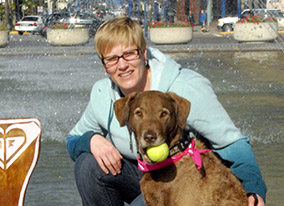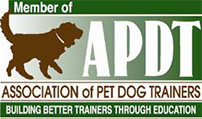So, I want to train my dog, but before I can do that, I have to get my dog to want me to work them. That’s the crux of positive dog training; the dog wants to do it so bad, that you allow them to work with you. Engagement is the name of the game. I looked up the definition of engagement and I like one that Webster has “the state of being in gear”. So, before I can train I need to get my dog in gear, or as many say “drive”.
The importance of doing this is the difference between a lackluster training session or show, and a sparkling top of your game performance. So, when I engage my dog, I actually have to set the stage for them to want to work. So, smart trainers think about things that affect their dog and also how that affects their reinforcers. This is called Motivational Operations, the definition of MO’s is, “a term developed for its ability to account for conditions that either increased or decreased the effectiveness of a consequence as a reinforcer or punisher”. So, those dry little treats that were so worth working for in the training building lose value when they are competing with smells in the grass outside. Also, your tug toy, the one that drove the dog crazy in the training building or your basement, the value of that can be reduced when you go to a new place that the dog may be interested in doing other things or even looking at other things besides your toy.
Good trainers take that into consideration. You must know your dog and know what reinforces that dog and how reinforcing that is to the dog. If you just ate a great steak dinner, with all the fixings and then someone offers you a piece of pizza from your favorite pizza place, how motivated are you to eat that pizza? That would depend on your appetite and your love of that pizza, but because of your being full, that pizza has less reinforcing value after a steak dinner than before it, at least for most people! Thinking about this, it allows you to set the stage for your dog wanting to work with you. Working for food before meals, using high value rewards in distracting or stressful situations, not playing with your dog before working, but saving the play for training times, and working a rested dog, not a tired dog, are all ways we can control how well the reinforcers we have for the dog work. One of the biggest things that can affect the dogs motivation to work can be the rate of reinforcement. Your rate of reinforcement in your usual training building will most likely have to increase if you take the dog somewhere new, thereby increasing the value of the dog engaging and working for you.
I did an engagement session with 3 different dogs as examples of how you must consider the dogs ability to work in an environment and respond to the information they give you by reading their behavior. Each dog came out of the building to potty first. I took them to an area that we don’t use for obedience much, and not at all since last fall. Mostly this would be an area I would use for NW, but I chose to use it for the video to demonstrate engagement for training.
Here is Cinders coming out to work:
Some of the things affecting Cinders wanting to work are that she has already eaten dinner by the time I train her (she is not my dog), and she has been playing at the doggie daycare all day as well. Not my ideal time to train, but it is what I had available this day.
She comes off the grass smells pretty easily at the start, but then she will do a little jumping on me routine that means she is not ready to work yet. She then engages pretty nicely by :29, but then I take some steps toward the grass and guess what happens to my reinforcers value? She is a green dog and we were not in the middle of any work there, so I let her disengage, but I don’t follow her, but I cannot force her to pay attention to me (or I will not). I pretend to eat the cookies she could have had, and then back up away from the grass, and when I get attention from her I ask for some simple spins to get started. She engaged and I rewarded and then did some small amount of heeling to criteria (I would still hold criteria to my cued behaviors) and I rewarded with a favorite toy.
I ask her for a stand, we have been working on that, and I know what she is capable of giving me and I am not afraid to ask her to work, I still want good quality behavior before I reward. If my dog chose to quit while we working like that, I would just put them away, get out another dog and let them take a nap. At 1:50 I get the stand we have been working on! Good girl! You get to do the whole chain!
I really like the way she is working and so I go ahead and move toward the distraction of the grass at 2:16. I intentionally put the toy on the grass, I want her to be by a major distraction like that and be able to play with me. I then ask her for downs, and I get play bows, her favorite trick. I won’t play with her for these, I need the down behavior before rewarding. We got it on the third try, she missed a down cue, and I broke off and did it again and she had no problem.
That would be a basic engagement session with a greener dog around distractions. The littlest bit of attention or asking to work with me, and I am there for you! Bring it! Still I can hold criteria, or even not ask for more difficult behaviors, but note that I never begged her to work for me.
Now here is Maggie’s engagement video, same set up, same day:
Again, I potty here where we will be working, making sure she gets a good sniff of the grass. Maggie has a lot more experience that Cinders, and at :23 I felt that she could connect with me and I cue her to set up. For Maggie, just quitting the grass smell, coming over by me, that is about all the attention or asking to work that she ever will do. But, if she could not set up to heel there, for her, that would be the end of our session. She is a very different dog than Cinders! While I work her she stays engaged and working and I still make sure that the behavior is meeting criteria, and that my reward rate is high enough that she wants to stay engaged with me.
At 1:28 I ask her if she wants to go sniff. That is her permission to smell the grass or floor or whatever else is there. It’s a relief for her, and allows me to tell her that sniffing is never a problem, when she does go sniff, it’s almost just a behavior and not real sniffing, she actually wants to work more than sniff! So, I ask her for a touch and she is so happy to do it! She can sniff any old time. If this session went on, here is where we would start to work, she is ready, she wants to engage me, and she wants to work!
Here is a video of my new puppy, Shine, working the same session, he’s 12 weeks old:
He potties, and when I see he is done, I know I can ask for a recall off that grass and get it, and he does. I have never worked him out here, and he works here just the same as in the building. At 1 min, I even ask him to go sniff, and he is like “why?”. Same area, but he is a different dog than the terriers. Even when I go to put away a toy at 1:27, he does not disengage, but continues to ask for engagement from me. He is not worried about this environment at all, but even when I have taken him to new places, and he is unsure of the area, if I ask him to work, the worry goes away. So, how easy is engagement and attention going to be with him compared to the terriers, with many competing interests?
So, you have to work the dog you have in front of you. B.F. Skinner said “The rat is always right”. If you have a dog that is very distracted or worried in environments, take your time and let them learn to engage for work, and then make sure your reinforcement rate makes that engagement worth it. Make sure to affect as many MO’s as you can, controlling things that you are going to use as reinforcers for the dog. Then the biggest thing to remember is that if the training is not going well, do something different! I have a sign in my training building that says “If you change nothing, nothing will change”, Bob Bailey had that hanging in our training room at a workshop. That sums up animal training to me:-)



No comments yet.